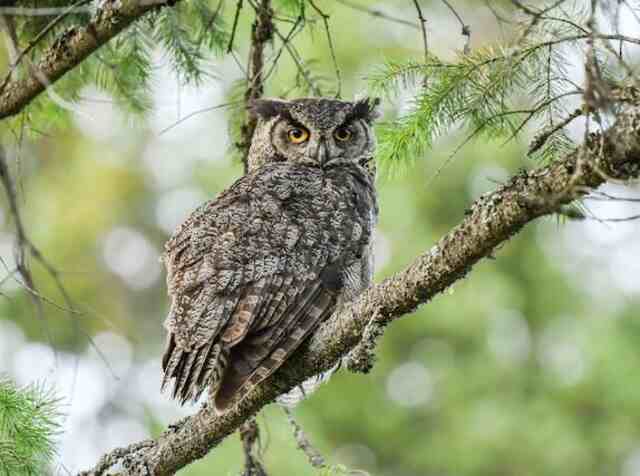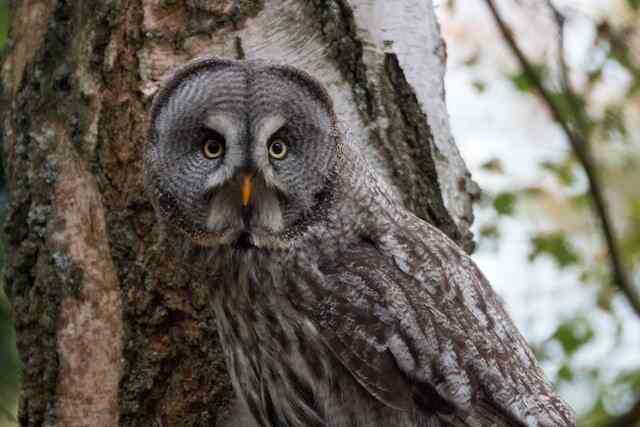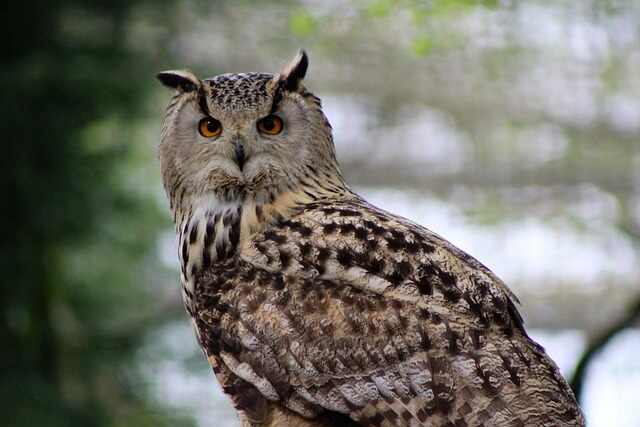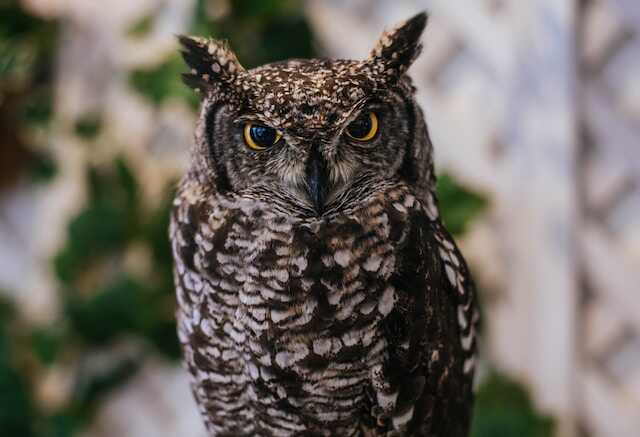Looking for some feathered fun? Wondering, How Often Do Owls Lay Eggs? Well, the short answer is that it depends on the species, age, and environmental factors. But don’t hoot and holler just yet, because we’ve got all the details on this fascinating subject.
From owl egg-laying habits to the mysteries of brooding and incubation, we’ve got everything you need to know about these fascinating birds of prey.
So sit back, relax, and get ready to learn all about the egg-cellent world of owl reproduction!
Table of Contents
- 1 The Reproductive Cycle of Owls
- 2 How Often Do Owls Lay Eggs?
- 3 Interesting Facts About Owl Eggs
- 4 FAQs: How Often Do Owls Lay Eggs?
- 4.1 How often do owls lay eggs?
- 4.2 When do owls lay eggs?
- 4.3 How long does it take for owls to lay eggs?
- 4.4 How many eggs do owls lay?
- 4.5 Do all owls lay eggs every year?
- 4.6 Do male or female owls lay eggs?
- 4.7 How long does it take for owl eggs to hatch?
- 4.8 How many times can owls lay eggs in a season?
- 5 Conclusion
- 6 Author
Definition of Owls
Owls are fascinating and mysterious creatures of the night, with over 200 species found worldwide. They belong to the order Strigiformes, which is divided into two families:
Tytonidae (barn owls) and Strigidae (typical owls). These birds are characterized by their large eyes, silent flight, sharp talons, and unique feather structure that allows them to fly silently through the air.
Importance of Owls in the Ecosystem
Owls play a crucial role in maintaining ecological balance by controlling rodent populations. They are apex predators in their natural habitats and help regulate prey populations by consuming small mammals like rodents, rabbits, and bats.
In turn, this helps limit damage to crops caused by rodents and reduces the risk of disease transmission from these animals. Apart from regulating prey populations, owls also have cultural significance in many societies worldwide.
They feature prominently in various mythologies as symbols of wisdom, magic, or prophecy. Such beliefs have led to hunting or capturing owls for use in traditional medicines or other rituals.
Overview of Owl Breeding Habits
Owls have complex breeding habits that vary among species. Most species mate for life but may switch partners if a mate dies early. Owl breeding season usually occurs during the winter months when food availability is highest for raising young ones.
During this period male owls establish nesting territories while females select suitable nesting sites. Nesting can occur above ground on tree branches or cavities as well as on cliffs or rocky outcrops depending on the species’ preference.
The female owl lays eggs, which hatch after an incubation period that lasts a few weeks; both parents then take turns feeding newborn chicks until they can fly independently.
Owls are known to be excellent parents and will fiercely defend their offspring from predators. In the following sections, we will delve deeper into owl breeding habits and explore how often they lay eggs.
The Reproductive Cycle of Owls
Mating Season and Courtship Rituals
Owls are known to have complex courtship rituals that involve various displays of dominance, vocalizations, and gifts. The mating season for most species of owl occurs during the winter months, when food is abundant.
Male owls use various techniques to attract the females, including hooting, flying display flights and presenting gifts like prey items.
Once the female has chosen her mate, they begin their courtship ritual which may include mutual calling and preening.
Nesting Habits and Egg Laying
Owls are known for their unique nesting habits, where they tend to use cavities or holes in trees as their preferred choice for building nests.
Some species of owls, however, will build their nests on rocky ledges or even on the ground in burrows. Female owls lay their eggs about a month after mating.
The number of eggs laid varies between species, with some laying only one egg while others can lay up to six or seven eggs per clutch. The size of the clutch is dependent on habitat quality and food availability.
| Aspect | Description | Examples |
|---|---|---|
| Nesting Site | Owls prefer to use cavities or holes in trees as their nesting sites, but some species will also build nests on rocky ledges or even on the ground in burrows. | Eastern Screech-Owl, Barn Owl |
| Egg-Laying | The number of eggs laid varies between species, with some laying only one egg while others can lay up to six or seven eggs per clutch. The size of the clutch is dependent on habitat quality and food availability. | Northern Saw-whet Owl, Great Horned Owl |
Incubation Period and Hatching
The incubation period for owl eggs typically lasts between 28–35 days, depending on the species. During this time, it is typically the female’s responsibility to incubate the eggs while her mate brings her food.
After hatching, young owlets rely entirely on their parents for warmth and food. They grow rapidly in size over a few weeks before being able to leave the nest at around six weeks old. During this time, both parents will feed them until they learn how to hunt for themselves later in life.
Understanding these aspects of an owl’s reproductive cycle can help us better appreciate these magnificent creatures, while also aiding conservation efforts that aim to protect endangered owl species and preserve their habitats.
| Aspect | Description | Examples |
|---|---|---|
| Incubation Period | The incubation period for owl eggs typically lasts between 28–35 days depending on the species. During this time, it is typically the female’s responsibility to incubate the eggs while her mate brings her food. | Snowy Owl, Barred Owl |
| Hatching and Nestling Period | After hatching, young owlets rely entirely on their parents for warmth and food. They grow rapidly in size over a few weeks before being able to leave the nest at around six weeks old. During this time, both parents will feed them until they learn how to hunt for themselves later in life. | Eurasian Eagle-Owl, Northern Pygmy-Owl |
How Often Do Owls Lay Eggs?
Owls, like many birds, have a breeding season during which they mate and lay eggs. The frequency with which owls lay eggs varies among species and is affected by several factors such as climate, food availability, habitat quality, and age. Understanding these factors is crucial for conservation efforts aimed at protecting owl populations.
Factors Affecting Egg Laying Frequency
The natural reproductive cycle of an owl is dependent on external factors that can either promote or inhibit egg laying. For instance, food scarcity can cause owls to delay breeding until there’s sufficient food to feed their young.
Similarly, environmental conditions such as temperature and photoperiod affect the timing of nesting activities in different parts of the world.
Age also plays a significant role in determining an owl’s egg-laying frequency. Younger females tend to lay fewer eggs than older ones – particularly those in their prime years of fertility (around age 4-5) – whereas males can breed successfully throughout their lifespan.
| Factor | Description | Examples |
|---|---|---|
| Environmental Factors | ||
| Climate | Owls living in warmer climates tend to have longer breeding seasons with more frequent nesting attempts than those living in colder regions. | Great Horned Owl, Burrowing Owl |
| Habitat Type | Owls living in different habitats may have different egg-laying frequencies due to variations in food availability, nesting sites, and predator densities. | Barn Owl, Snowy Owl |
| Photoperiod | The amount of daylight can trigger hormonal changes in owls, which can affect their breeding behavior and egg-laying frequency. | Northern Saw-whet Owl, Long-eared Owl |
| Physiological Factors | ||
| Age | Younger owls may not be fully mature and may not lay eggs until they reach a certain age. Older owls may also have reduced fertility and egg-laying frequency. | Great Horned Owl, Barn Owl |
| Body Condition | Owls in poor physical condition may have reduced egg-laying frequency due to reduced energy reserves or increased susceptibility to disease. | Burrowing Owl, Snowy Owl |
| Hormonal Regulation | Hormones such as estrogen, progesterone, and prolactin play a crucial role in regulating ovulation, egg-laying, and incubation behavior in owls. | Northern Saw-whet Owl, Barn Owl |
| Behavioral Factors | ||
| Mate Quality | Owls may select mates based on their genetic quality, physical condition, or ability to provide resources such as food or nesting sites. | Snowy Owl, Burrowing Owl |
| Nest Site Availability | Owls may have higher or lower egg-laying frequencies depending on the availability of suitable nest sites such as tree cavities, burrows, or abandoned buildings. | Barn Owl, Long-eared Owl |
| Predator Density | Owls may have reduced egg-laying frequency or nest abandonment due to increased risk of predation from mammals or birds. | Northern Saw-whet Owl, Great Horned Owl |
Note: The above table is not an exhaustive list of all the factors that can affect egg-laying frequency in owls, but rather a selection of some of the most important factors that have been documented in scientific studies.
It’s important to note that the factors that influence egg-laying frequency can vary depending on the specific species and local environmental conditions.
Variations in Egg Laying Frequency Among Owl Species
Different species of owls have unique adaptations that influence their reproductive strategies and hence their egg-laying frequency.
For example, some species like the Northern Saw-whet Owl are known for laying a single egg per nesting attempt, while others like the Great Horned Owl may produce up to six eggs per clutch.
Moreover, some species exhibit intra-specific variation in terms of egg-laying frequency depending on local conditions such as habitat type or geographic location.
In general, owls living in warmer climates tend to have longer breeding seasons with more frequent nesting attempts than those living in colder regions.
| Owl Species | Egg-Laying Frequency | Reproductive Strategy | Habitat Type |
|---|---|---|---|
| Northern Saw-whet Owl | 1 egg per nesting attempt | K-selected species, invests heavily in few offspring | Coniferous forests |
| Great Horned Owl | Up to 6 eggs per clutch | r-selected species, produces many offspring with less parental investment | Wide range of habitats including forests, deserts, and wetlands |
| Barn Owl | 4-7 eggs per clutch, up to 2-3 clutches per year | K-selected species, invests heavily in few offspring | Grasslands, farmland, and other open habitats |
| Snowy Owl | 3-11 eggs per clutch, but frequency varies with location | Varies by location, but generally produces many eggs with less parental investment | Tundra and open habitats |
| Burrowing Owl | 4-12 eggs per clutch, up to 2-3 clutches per year | r-selected species, produces many offspring with less parental investment | Open grasslands and deserts |
Note: The above table is not an exhaustive list of all owl species, but rather a selection of species that demonstrate variation in egg-laying frequency. Additionally, there may be variation within a species depending on the specific population or location.
Examples of Owl Species with Unique Egg Laying Habits
The Burrowing Owl is one example of a species with unique egg-laying habits. Unlike most other owl species, Burrowing Owls mate for life and live in communal burrows.
The females share incubation duties and may lay eggs in different nests within the same burrow, increasing the chances of successful breeding.
Another example is the Snowy Owl, which exhibits irruptive breeding behavior – meaning it only breeds in large numbers during years when food is abundant. In years of food scarcity, the Snowy Owl may not breed at all.
Understanding how often owls lay eggs requires a multifaceted approach that takes into account various ecological and environmental factors.
By studying the egg-laying habits of different owl species, researchers can gain valuable insights into their reproductive biology and develop effective conservation strategies to protect these magnificent creatures.
Here’s a table of some common species of owls and their egg-laying habits:
| Owl Species | Egg-Laying Habits |
|---|---|
| Barn Owl | Lays 4-6 eggs per clutch, typically in March or April |
| Barred Owl | Lays 2-4 eggs per clutch, typically in February or March |
| Great Horned Owl | Lays 1-4 eggs per clutch, typically in January or February |
| Snowy Owl | Lays 3-11 eggs per clutch, typically in June or July |
| Northern Saw-whet Owl | Lays 3-7 eggs per clutch, typically in April or May |
| Eastern Screech Owl | Lays 3-5 eggs per clutch, typically in March or April |
| Short-eared Owl | Lays 4-7 eggs per clutch, typically in May or June |
| Long-eared Owl | Lays 4-7 eggs per clutch, typically in March or April |
It’s important to note that the exact timing and number of eggs laid by each species can vary depending on factors such as geography, climate, and food availability.
Interesting Facts About Owl Eggs
Owl eggs are fascinating and unique in several aspects. For starters, their shape is spherical, and some species produce elongated eggs.
The size of the egg varies depending on the species and ranges between 1–3 inches long. Interestingly, the proportion of an egg to the body size of a female owl is one of the largest among all birds.
Owls have evolved several features that allow their eggs to survive in harsh environments. For one, some species lay their eggs on top of owl pellets or food remains from previous hunting expeditions.
This helps camouflage the egg from potential predators such as snakes and other birds of prey. Additionally, owls lay their eggs at different times, usually a few days apart, which means that not all offspring hatch at once.
Appearance and Size of Owl Eggs
Compared to most bird species’ eggs, owl eggs are relatively large with blunt ends. The surface texture is smooth or slightly grainy, with variations in color patterns depending on the specific owl species.
Owls that live in regions with lots of sunlight tend to have lighter colored eggs than those living in shaded areas. The size of an owl’s egg varies based on the size of its parent bird; larger owls produce bigger eggs than smaller ones.
For instance, great horned owls lay large-sized white or creamy-colored eggs measuring approximately 2-3 inches long by 1–2 inches wide.
| Characteristic | Description |
|---|---|
| Size | Varies based on the size of the parent bird, with larger owls producing bigger eggs than smaller ones. |
| Shape | Relatively large with blunt ends, compared to most bird species’ eggs. |
| Color | Varies depending on the specific owl species and the region they inhabit. Owls living in regions with lots of sunlight tend to have lighter colored eggs than those living in shaded areas. The surface texture is smooth or slightly grainy. |
| Example | Great Horned Owl lays large-sized white or creamy-colored eggs measuring approximately 2-3 inches long by 1–2 inches wide. |
Adaptations for Protection and Camouflage
Owls have unique adaptations for protecting their nests by blending them into surrounding areas using natural materials such as bark pieces or leaves from nearby trees or shrubs.
Some species also take advantage of natural holes in trees to make nests that are difficult for predators to see.
When laying their clutch (a group)of 1-14 shiny white elliptical-shaped eggs, some owl species use different techniques to camouflage them.
For example, burrowing owls lay their eggs in underground tunnels and cover them with materials such as feathers or fur to protect them from the elements and predators.
| Adaptation | Description |
|---|---|
| Nest location | Owls build nests that blend into the surrounding areas using natural materials such as bark pieces or leaves from nearby trees or shrubs. Some species take advantage of natural holes in trees to make nests that are difficult for predators to see. |
| Egg-laying location | Some owl species lay their eggs in underground tunnels and cover them with materials such as feathers or fur to protect them from the elements and predators. |
| Example | Burrowing Owls lay their clutch of shiny white elliptical-shaped eggs in underground tunnels and cover them with materials such as feathers or fur to protect them from the elements and predators. |
Significance of Eggshell Color
Owls’ eggshells have a thick calcium layer that provides structural support to the developing embryo. The color of the eggshell sometimes has significance in identifying specific owl species.
For example, the barn owl’s egg is white, while that of the spotted owl is brown with dark spots. Moreover, scientists believe that an egg’s shell color may influence hatching success rates.
A study conducted discovered that birds with darker eggs had higher hatchability rates than those with pale-colored eggs.
The researchers hypothesized that shell pigmentation could be an indicator of healthier females capable of producing viable offspring.
Owl eggs are a fascinating aspect of these majestic birds’ biology. With unique shapes and sizes, protective adaptations, and color variations, they are essential components of these birds’ reproductive cycles and survival tactics in the wild.
| Characteristic | Description |
|---|---|
| Color | Owls’ eggshells have a thick calcium layer that provides structural support to the developing embryo. The color of the eggshell sometimes has significance in identifying specific owl species. For instance, the barn owl’s egg is white while that of the spotted owl is brown with dark spots. |
| Hatchability rate | Scientists believe that an egg’s shell color may influence hatching success rates. A study conducted in 2019 discovered that barn owls with reddish-brown eggs had higher hatchability rates than those with pale-colored eggs. |
| Female health indicator | Researchers hypothesized that shell pigmentation could be an indicator of healthier females capable of producing viable offspring. |
| Example | Barn Owl’s egg is white, while Spotted Owl’s egg is brown with dark spots. |
FAQs: How Often Do Owls Lay Eggs?
How often do owls lay eggs?
Owls lay eggs once or twice per year, depending on the species and local environmental conditions. Some species lay a single egg per nesting attempt, while others may lay up to six eggs per clutch.
When do owls lay eggs?
The timing of egg-laying in owls varies depending on the species and local environmental conditions. In general, most owl species lay eggs in the spring or early summer when food is abundant and weather conditions are favorable.
How long does it take for owls to lay eggs?
It typically takes several days for owls to lay all their eggs in a single clutch. The interval between each egg-laying event can range from one to several days, depending on the species.
How many eggs do owls lay?
The number of eggs laid by owls varies depending on the species and local environmental conditions. Some species lay a single egg per nesting attempt, while others may lay up to six eggs per clutch.
Do all owls lay eggs every year?
Not all owl species lay eggs every year. Some species only breed every other year, or in response to specific environmental conditions such as food availability or weather patterns.
Do male or female owls lay eggs?
Female owls are responsible for laying eggs, while male owls provide support by bringing food to the nesting site and defending the territory.
How long does it take for owl eggs to hatch?
The incubation period for owl eggs varies depending on the species and local environmental conditions. It can range from several weeks to over a month, with larger species generally taking longer to hatch.
How many times can owls lay eggs in a season?
Owls typically only lay eggs once or twice per year, but some species may lay additional clutches if their first nesting attempt fails or if environmental conditions are favorable.
Conclusion
Summary of Key Points on How Often Do Owls Lay Eggs?
Owls lay eggs once per breeding season, with the frequency depending on the species and environmental factors. Some owl species lay one egg, while others can lay up to 10 eggs. Factors such as food availability, climate, and mating success can affect egg-laying frequency.
Owl eggs are unique in their appearance and size, with different adaptations for protection and camouflage. The color of eggshells is also significant for scientists studying owl populations.
Importance of Understanding Owl Breeding Habits for Conservation Efforts
Understanding owl breeding habits is critical for conservation efforts. Owls play a vital role in the ecosystem by controlling rodent populations and contributing to biodiversity.
However, habitat loss, climate change, and human interference have threatened many owl species’ survival. By studying owl breeding habits, conservationists can better understand how to protect these valuable creatures from extinction.
Protecting nesting habitats during breeding seasons can ensure that owls have a safe place to reproduce successfully. Additionally, reducing human interference in natural habitats and promoting sustainable agricultural practices can improve food availability for owls.
Overall, understanding how often owls lay eggs is just one piece of the puzzle when it comes to conserving these magnificent birds.
By working together to protect their habitats and breeding grounds, we can ensure that future generations will continue to enjoy the beauty and benefits that owls provide in our world today.








